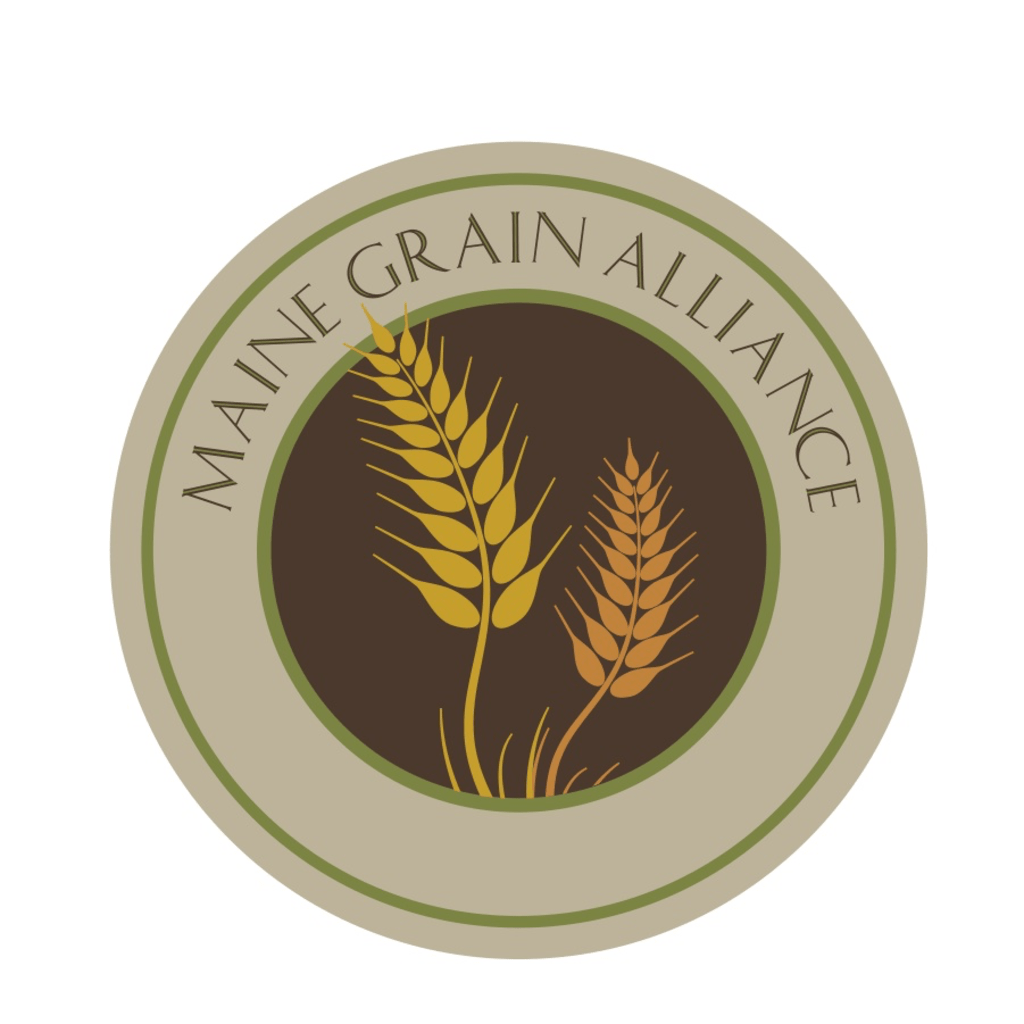The flock of pigeons waited patiently on the peak of my small barn while I ran the seed cleaner. Each time I turned off the machine I would look up and see them sitting watching me. If I went into the house to get a glass of water they would swoop down and busily peck at the piles of straw that lay around the yard. I was running the cleaner on a large tarp and after each type of grain I would sweep up the extra chaff and seed that lay around and run them thru the cleaner again. Here I am now, finished with my cleaning, looking back over the past busy month.
I took a day off to recover from the Kneading Conference and Bread Fair and began my harvest on the first of August. I had about an acre or more of various types of grain growing in the field below my off-the-grid house here in central Maine. My wife helped me hand harvest the rows of grain with hand sickles. I had planted long 200 ft beds of triple rows of each variety. Usually three beds each. I’d planted them in beds with rows in between so I could easily weed in between and then I’d under seeded with white clover. I really didn’t have any weeds except for a few milkweed here and there. I’d used white clover because it’s short and makes it easier to use the mini-combine on the larger plots. More about them later. We would work our way down the rows laying the bundles of grain off to the sides. When we finished we gathered the grain into sheaves and tied them up with string and labeled them.
The next day I went down to the demonstration plot in front of Maine Wood Heat in Skowhegan and harvested some of the rows planted there. I bundled them up into sheaves and left them standing behind the signs of the varieties. It looks so great to see the grain bundled into sheaves like that. Just by way of explanation, I use the word sheaves but others use the word stooks. I guess it’s just my Anglo heritage.
There were a number of different plots that we had planted last fall for MGA’s Heritage Seed Restoration Project. At my place out on the Solon/Bingham town line, I had 5 different varieties in small plots; a third of an acre of Sirvinta, a quarter acre of Midsommer Rye, and a little smaller plot (maybe a 1/5 or 1/6 of an acre) of Ukrainka wheat. Also in Solon, we had planted a 2 acre plot of Sirvinta in a piece of bottom land along the Kennebec River. We also had an acre of Sirvinta planted at Taylor Field in Skowhegan. Taylor field is land owned by the Somerset Woods Trustees and is across from the Margaret Chase Smith Library within walking distance of the Maine Grains grist mill in downtown Skow. We had the demonstration plots in front of Maine Wood Heat also in Skowtown, and then we had an acre of Sirvinta planted at the Blue Ribbon Farm in Mercer which is 20 miles or so west of Skowhegan. We had varying levels of success at each of them.
Over the month of August I harvested all the grain and cleaned it and bagged it up ready to be replanted in the next couple of weeks. Next time I’ll give you the highlights—and lowlights- of my harvest month.
